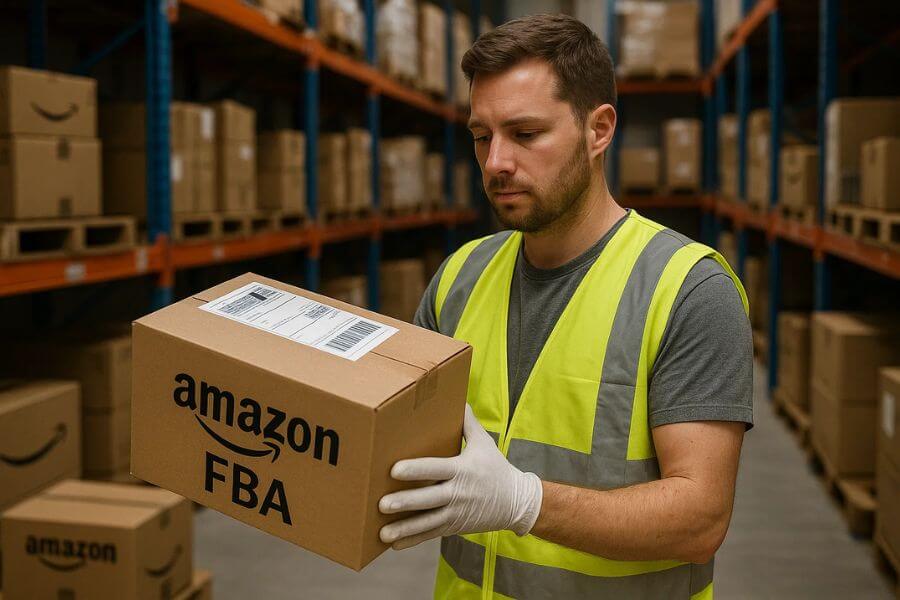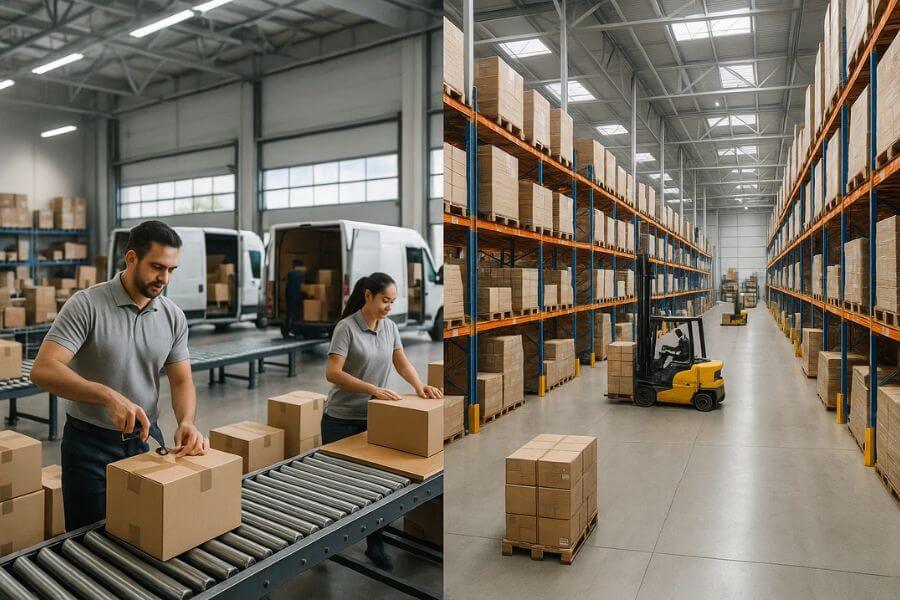If you’re an ecommerce seller on Amazon, chances are you’ve already heard about Seller Fulfilled Prime (SFP). While Fulfillment by Amazon (FBA) gets a lot of attention, SFP is quietly becoming one of the most attractive options for merchants who want more control over their operations without losing access to Amazon’s powerful Prime badge.
In 2025, with evolving logistics technology, customer expectations, and Amazon’s shifting marketplace dynamics, Seller Fulfilled Prime has become more relevant than ever. Whether you’re a seasoned seller or just exploring fulfillment strategies, understanding the benefits of SFP could be the key to scaling your business efficiently while maintaining customer satisfaction.
In this article, we’ll dive into the top 10 reasons you should consider Seller Fulfilled Prime in 2025, along with detailed insights into how it works, why it matters, and what makes it a strong alternative to relying solely on FBA.
What is Seller Fulfilled Prime (SFP)?
Before diving into the benefits, let’s clarify what SFP actually is.
Seller Fulfilled Prime is a program that allows third-party Amazon sellers to display the Prime badge on their listings, provided they can meet Amazon’s strict shipping and service standards. Instead of sending inventory to Amazon’s fulfillment centers (as with FBA), sellers fulfill orders themselves—either from their own facilities or with the help of a 3PL.
To qualify for SFP, sellers must meet key performance requirements, including:
- Shipping orders the same day or within one business day
- Offering nationwide two-day delivery
- Maintaining an on-time shipment rate of 99% or higher
- Using Amazon-approved carriers with tracking
- Keeping cancellation rates under 1%
While the requirements may sound demanding, advances in logistics technology, multi-carrier shipping software, and the rise of specialized 3PLs have made it easier than ever for sellers to meet these expectations in 2025.
Now, let’s break down the top 10 reasons you should consider Seller Fulfilled Prime this year.
1. Maintain control over your inventory
When you send products to Amazon FBA warehouses, you give up a significant degree of control. Amazon dictates where inventory is stored, how it is handled, and when it is made available for sale.
With SFP, you keep your inventory in your own warehouse or with a fulfillment partner you trust. That means:
- Flexibility: You decide how much inventory to keep on hand and where to store it.
- Customization: You can offer bundles, gift sets, or variations that don’t always fit into Amazon’s standardized system.
- Fewer restrictions: No arbitrary limits on how much stock you can send in, which has been a common frustration with FBA.
For example, imagine you sell custom-printed apparel that frequently changes with trends. With FBA, you’d need to ship bulk inventory that might go unsold if styles shift. With SFP, you can print on demand or maintain smaller stock levels in-house, reducing risk.
In 2025, when supply chain agility is a critical success factor, keeping tighter control of your inventory can give you a competitive edge.
2. Reduced reliance on FBA warehousing
Amazon’s fulfillment centers are powerful, but they’re also crowded, expensive, and often unpredictable. Over the past few years, sellers have faced:
- Holiday season delays where check-ins take weeks.
- Rising storage costs, particularly for oversized or slow-moving items.
- Inventory caps that limit how much stock you can store.
By incorporating SFP into your fulfillment strategy, you avoid being entirely at the mercy of Amazon’s warehouse network. You can:
- Balance between FBA and SFP for different SKUs.
- Ship directly from your facility when FBA centers are overloaded.
- Use your own space or regional 3PLs to handle seasonal surges.
For example, a seller of patio furniture (bulky and seasonal) might use SFP to manage off-season stock in their own warehouse, avoiding high FBA fees while still keeping products Prime-eligible.
This hybrid fulfillment approach provides stability in an ecommerce landscape where Amazon’s rules can change overnight.
3. Prime badge visibility without FBA
The Prime badge is a game-changer. Data consistently shows that products with the Prime badge enjoy higher click-through rates and better conversions because shoppers trust the fast, free shipping guarantee.
Traditionally, the only way to get the badge was through FBA. With SFP, you unlock the same benefit:
- Customers see your listing as Prime-eligible.
- Your products remain competitive against other Prime offers.
- You don’t lose out on traffic simply because you’re not using FBA.
In short, SFP levels the playing field. You can keep the Prime badge’s conversion-boosting power while controlling how orders are shipped.
4. Lower fulfillment costs for certain products
Not all products are a good fit for FBA. Some categories become unprofitable due to Amazon’s storage and handling fees.
Products that often work better under SFP include:
- Oversized items like furniture, sporting goods, or appliances.
- Heavy products where FBA’s per-unit fees cut into margins.
- Seasonal items that don’t sell steadily year-round.
- Custom or bundled products that don’t fit Amazon’s fulfillment structure.
With SFP, you can negotiate your own carrier rates, leverage regional shipping hubs, or work with a 3PL that specializes in your product category. Many sellers find that for certain SKUs, SFP is more cost-efficient than FBA.
In 2025, as shipping carriers expand same-day and two-day networks nationwide, SFP offers even more room for optimization.
5. Improved multichannel flexibility
If you’re only selling on Amazon, FBA might work fine. But most growing ecommerce brands are multi-channel—selling on Shopify, Walmart Marketplace, eBay, TikTok Shop, and beyond.
Here’s the challenge: inventory stored in FBA is restricted. You can’t freely use that stock to fulfill orders from other platforms without paying extra fees through Amazon Multi-Channel Fulfillment (MCF).
With SFP, your inventory remains centralized in your own warehouse or with your 3PL. This allows you to:
- Serve all your channels from one inventory pool.
- Reduce the risk of stockouts caused by splitting inventory.
- Simplify your order management system.
In 2025, when diversifying beyond Amazon is essential to reduce platform risk, SFP provides the flexibility needed to scale across multiple sales channels seamlessly.
6. More control over branding and packaging
With FBA, orders arrive in Amazon-branded boxes. While convenient, this prevents you from building a strong brand identity with your customers.
SFP changes the game. By shipping orders yourself, you can:
- Use custom packaging that reflects your brand.
- Include inserts like thank-you cards, discount codes, or product care instructions.
- Deliver a consistent customer experience across Amazon and other sales channels.
For example, a skincare brand might want every order to include eco-friendly packaging, a sample of a new product, and a loyalty program insert. With FBA, this isn’t possible. With SFP, it’s fully in your control.
In 2025, with customer loyalty becoming harder to maintain, branded packaging is one of the most effective tools for standing out in a crowded marketplace.
7. Faster and more cost-effective returns management
Returns are an unavoidable part of ecommerce. Industry data shows that ecommerce return rates hover between 15% and 30%, depending on the category.
With FBA, Amazon manages returns—but this can be costly and less transparent for sellers. Items are often marked as unsellable, and you may have to pay fees to have them removed or destroyed.
SFP gives you the opportunity to:
- Process returns directly at your warehouse.
- Inspect, refurbish, or repackage items for resale.
- Reduce costs associated with return handling.
- Gain more visibility into why customers are returning products.
This hands-on approach to returns can save money and help you identify product or packaging improvements that reduce future return rates.
8. Better use of 3PL partnerships
In the past, one of the biggest hurdles of SFP was meeting Amazon’s strict delivery standards. But in 2025, the landscape has changed. Many third-party logistics (3PL) providers now specialize in Amazon SFP.
These 3PLs already have:
- Multi-location warehouse networks.
- Pre-negotiated shipping contracts with carriers.
- Experience meeting Amazon’s two-day shipping requirements.
For sellers, this means you don’t need to invest millions in your own nationwide fulfillment infrastructure. Instead, you can partner with a 3PL and outsource SFP compliance while focusing on growing your brand.
9. Avoid stockouts and over-reliance on Amazon
Stockouts are one of the fastest ways to lose sales momentum on Amazon. If your FBA inventory isn’t received or processed in time, your listing can become inactive—even if you have plenty of stock in your own warehouse.
SFP helps solve this by allowing you to:
- Fulfill orders directly without waiting for Amazon check-ins.
- Keep listings active as long as you have inventory on hand.
- Dynamically adjust fulfillment between FBA and SFP.
For example, during peak seasons like Black Friday or Prime Day, FBA centers can get backlogged. Sellers using only FBA may run out of stock. But sellers with SFP can keep shipping from their own facilities, maintaining momentum and avoiding ranking drops.
10. Future-proofing against Amazon policy changes
One of the realities of selling on Amazon is that the rules are constantly changing. Over the years, sellers have seen:
- Rising FBA fees for storage and fulfillment.
- New restrictions on product categories.
- Increased long-term storage surcharges.
- Shifts in return and reimbursement policies.
By incorporating SFP into your business model, you’re less dependent on Amazon’s fulfillment system. Even if Amazon changes FBA policies again in 2025 or beyond, you’ll have a flexible, resilient fulfillment strategy that puts you in control.
This future-proofing is invaluable for brands that plan to scale long-term rather than chasing short-term gains.
Conclusion
Seller Fulfilled Prime (SFP) isn’t the easiest path—it requires meeting strict standards and either investing in fulfillment infrastructure or partnering with a reliable 3PL. But in 2025, it’s an increasingly attractive option for serious Amazon sellers.
By choosing SFP, you can:
- Maintain control of your inventory.
- Avoid high FBA fees for oversized or seasonal products.
- Keep the Prime badge that boosts conversions.
- Build a branded customer experience.
- Future-proof your business against Amazon’s policy changes.
If you’re looking to scale your ecommerce operations while keeping independence, Seller Fulfilled Prime could be the key to unlocking your next stage of growth.
Frequently asked questions about SFP
Q1: How do I qualify for Seller Fulfilled Prime in 2025?
To qualify, you must meet Amazon’s performance requirements, including shipping 99% of orders on time, maintaining a cancellation rate under 1%, and offering nationwide two-day delivery through Amazon-approved carriers.
Q2: Can I use a 3PL to run SFP on my behalf?
Yes. Many 3PLs now specialize in Amazon SFP compliance and can manage fast shipping, carrier integrations, and nationwide coverage for you. This is a common way sellers scale SFP without building their own warehouses.
Q3: Is Seller Fulfilled Prime available in all countries?
As of 2025, SFP is primarily available in the United States, the United Kingdom, and select other Amazon marketplaces. Availability may vary depending on Amazon’s logistics infrastructure in each region.
Q4: What happens if I fail to meet SFP performance standards?
If you fall below Amazon’s requirements (like late shipments or high cancellation rates), Amazon may suspend your SFP eligibility. You’ll still be able to sell on Amazon, but your listings will lose the Prime badge until you regain compliance.
Q5: Is Seller Fulfilled Prime better for small businesses or larger sellers?
SFP can work for both, but the benefits are especially strong for mid-sized to larger sellers with established operations or access to a 3PL. Smaller sellers may find the requirements challenging without additional fulfillment support.





